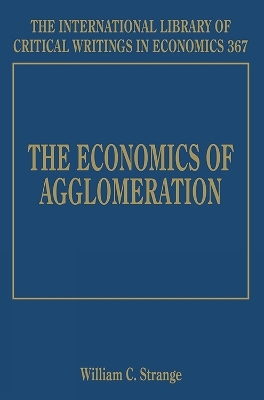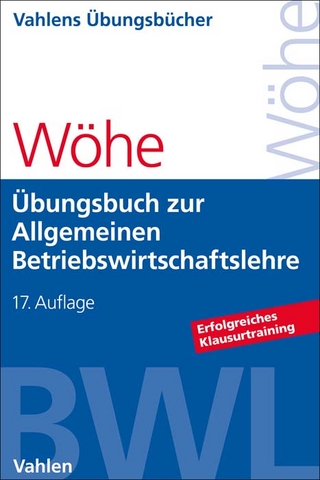
The Economics of Agglomeration
Edward Elgar Publishing Ltd (Verlag)
978-1-78811-977-1 (ISBN)
This research review discusses some of the most essential papers encompassing agglomeration economies. Agglomeration economies are manifested in cities and industry clusters shaping the neighborhoods and the regions that contain them. The review analyses econometric methods and data improvements, geographic scales at which agglomeration economies operate, micro-neighborhoods and mega-regions. The author also uncovers the forces driving the field including labor markets, input markets and dynamic phenomena such as innovation, technology change and growth.
Edited by William C. Strange, SmartCentres Chair of Real Estate, Professor of Economic Analysis and Policy, Rotman School of Management, University of Toronto, Canada
Contents:
Acknowledgements
Introduction William C. Strange
PART IESTIMATING AGGLOMERATION ECONOMIES [193 pp]
1. Gilles Duranton and Henry G. Overman (2005), ‘Testing for Localization Using Micro-Geographic Data’, Review of Economic Studies, 72 (4), December, 1077–106
2. J. Vernon Henderson (2003), ‘Marshall's Scale Economies’, Journal of Urban Economics, 53 (1), January, 1–28
3. Pierre-Philippe Combes, Gilles Duranton, and Laurent Gobillon (2008), ‘Spatial Wage Disparities: Sorting Matters!’, Journal of Urban Economics, 63 (2), March, 723–42
4. Michael Greenstone, Richard Hornbeck and Enrico Moretti (2010), ‘Identifying Agglomeration Spillovers: Evidence from Winners and Losers of Large Plant Openings’, Journal of Political Economy, 118 (3), June, 536–98
5. Pierre-Philippe Combes (2012), ‘The Productivity Advantages of Large Cities: Distinguishing Agglomeration from Firm Selection’, Econometrica, 80 (6), November, 2543–94
PART IITHE GEOGRAPHY OF AGGLOMERATION ECONOMIES
6. Stuart S. Rosenthal and William C. Strange (2003), ‘Geography, Industrial Organization, and Agglomeration’, Review of Economics and Statistics, 85 (2), May, 377–93
7. Mohammad Arzaghi and J. Vernon Henderson (2008), ‘Networking off Madison Avenue’, Review of Economic Studies, 75 (4), October, 1011–38
8. Gabriel M. Ahlfeldt, Stephen J. Redding, Daniel M. Strum and Nikolas Wolf (2015), ‘The Economics of Density: Evidence from the Berlin Wall’, Econometrica, 86 (6), November, 2127–89
PART IIIMICROFOUNDATIONS: HORSE RACES
9. Glenn Ellison, Edward L. Glaeser and William R. Kerr (2010), ‘What Causes Industry Agglomeration? Evidence from Coagglomeration Patterns’, American Economic Review, 100 (3), June, 1195–213
10. Stuart S. Rosenthal and William C. Strange (2001), ‘The Determinants of Agglomeration’, Journal of Urban Economics, 50 (2), September, 191–229
11. Jordi Jofre-Monseny, Raquel Marín-López and Elisabet Viladecans-Marsal (2011), ‘The Mechanisms of Agglomeration: Evidence from the Effect of Inter-Industry Relations on the Location of New Firms’, Journal of Urban Economics, 70 (2–3), September–November, 61–74
12. Stephen B. Billings and Erik B. Johnson (2016), ‘Agglomeration within an Urban Area’, Journal of Urban Economics, 91, January, 13–25
13. Giulia Faggio, Olmo Silva and William C. Strange (2017), ‘Heterogeneous Agglomeration’, Review of Economics and Statistics, 99 (1), February, 80–94
PART IVTECHNOLOGY, DYNAMICS, GROWTH
14. Gilles Duranton and Diego Puga (2001), ‘Nursery Cities: Urban Diversity, Process Innovation, and the Life Cycle of Products’, American Economic Review, 91 (5), December, 1454–77
15. Jeffrey Lin (2011), ‘Technological Adaptation, Cities, and New Work’, Review of Economics and Statistics, 93 (2), May, 554–74
16. Donald R. Davis and David E. Weinstein (2002), ‘Bones, Bombs, and Break Points: The Geography of Economic Activity’, American Economic Review, 92 (5), December, 1269–89
17. Ajay Agrawal, Devesh Kapur and John McHale (2008), ‘How do Spatial and Social Proximity Influence Knowledge Flows? Evidence from Patent Data’, Journal of Urban Economics, 64 (2), September, 258–69
18. Edward L. Glaeser, Sari Pekkala Kerr and William R. Kerr (2015), ‘Entrepreneurship and Urban Growth: An Empirical Assessment with Historical Mines’, Review of Economics and Statistics, 97 (2), April, 498–520
PART VLABOR MARKETS
19. Bruce Fallick, Charles A. Fleischman and James B. Rebitzer (2006), ‘Job-Hopping in Silicon Valley: Some Evidence Concerning the Microfoundations of a High-Technology Cluster’, Review of Economics and Statistics, 88 (3), October, 472–81
20. Hoyt Bleakley and Jeffrey Lin (2012), ‘Thick-Market Effects and Churning in the Labor Market: Evidence from US Cities’, Journal of Urban Economics, 72 (2–3), September–November, 87–103
21. Jorge De La Roca and Diego Puga (2017), ‘Learning by Working in Big Cities’, Review of Economic Studies, 84 (1), January, 106–42
22. Nathaniel Baum-Snow and Ronni Pavan (2011), ‘Understanding the City Size Wage Gap’, Review of Economic Studies, 79 (1), August, 88–127
23. Rebecca Diamond (2016), ‘The Determinants and Welfare Implications of US Workers' Diverging Location Choices by Skill: 1980–2000’, American Economic Review, 106 (3), March, 479–524
24. Marigee Bacolod, Bernardo S. Blum and William C. Strange (2016), ‘Skills in the City’, Journal of Urban Economics, 65 (2), March, 136–53
25. Joseph Gyourko, Christopher Mayer, and Todd Sinai (2013), ‘Superstar Cities’, American Economic Journal: Economic Policy, 5 (4), November, 167–99
PART VIINPUT MARKETS AND ECONOMIC GEOGRAPHY
26. Gianmarco Ottaviano, Takatoshi Tabuchi and Jacques-François Thisse (2002), ‘Agglomeration and Trade Revisited’, International Economic Review, 43 (2), May, 409–35
27. Treb Allen and Costas Arkolakis (2014), ‘Trade and the Topography of the Spatial Economy’, Quarterly Journal of Economics, 129 (3), June, 1085–140
28. Thomas J. Holmes (2011), ‘The Diffusion of Wal-Mart and Economies of Density’, Econometrica, 79 (1), January, 253–302
Index
| Erscheinungsdatum | 22.11.2019 |
|---|---|
| Reihe/Serie | The International Library of Critical Writings in Economics series |
| Verlagsort | Cheltenham |
| Sprache | englisch |
| Maße | 169 x 244 mm |
| Themenwelt | Technik |
| Wirtschaft ► Betriebswirtschaft / Management ► Allgemeines / Lexika | |
| ISBN-10 | 1-78811-977-0 / 1788119770 |
| ISBN-13 | 978-1-78811-977-1 / 9781788119771 |
| Zustand | Neuware |
| Haben Sie eine Frage zum Produkt? |
aus dem Bereich


